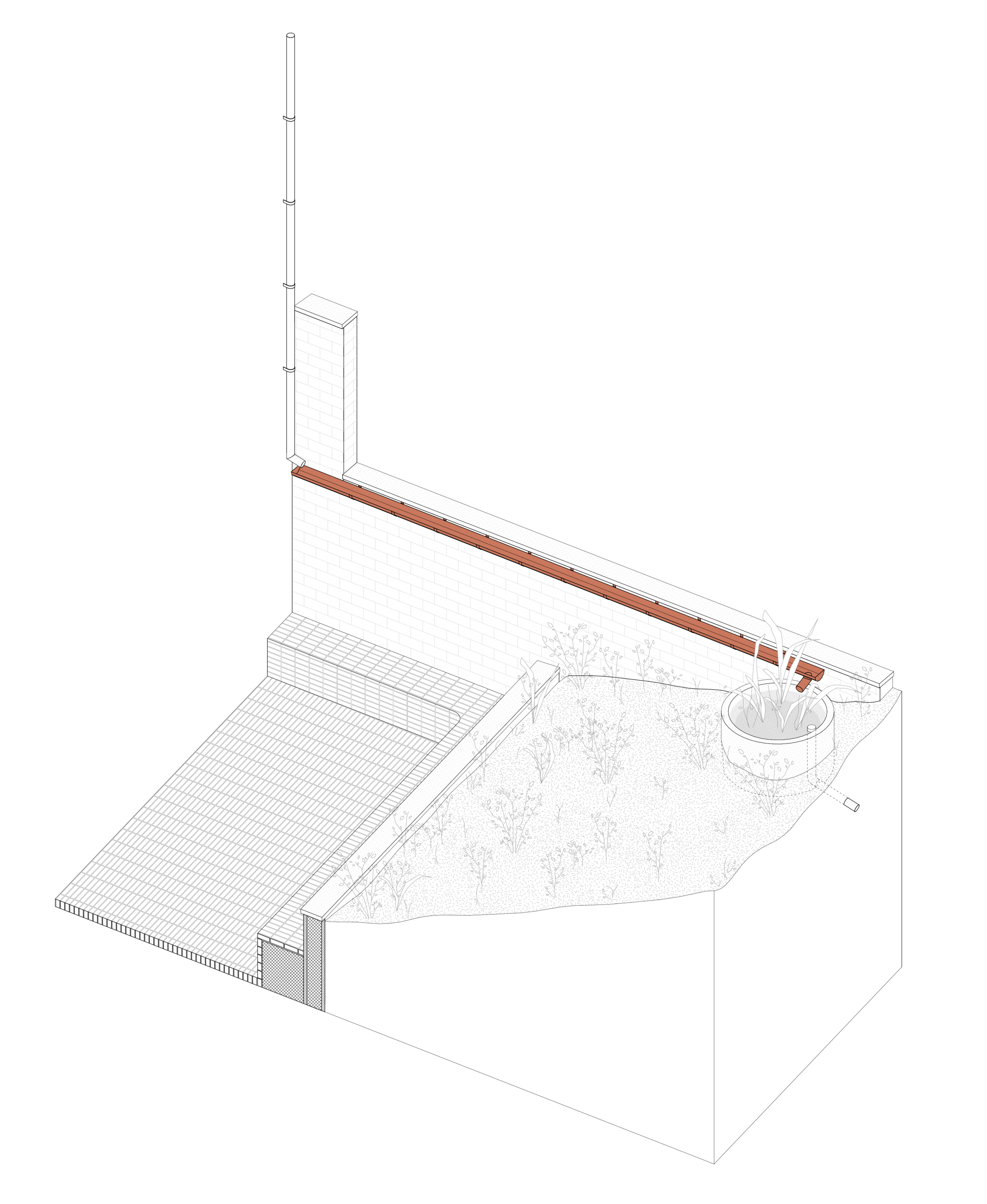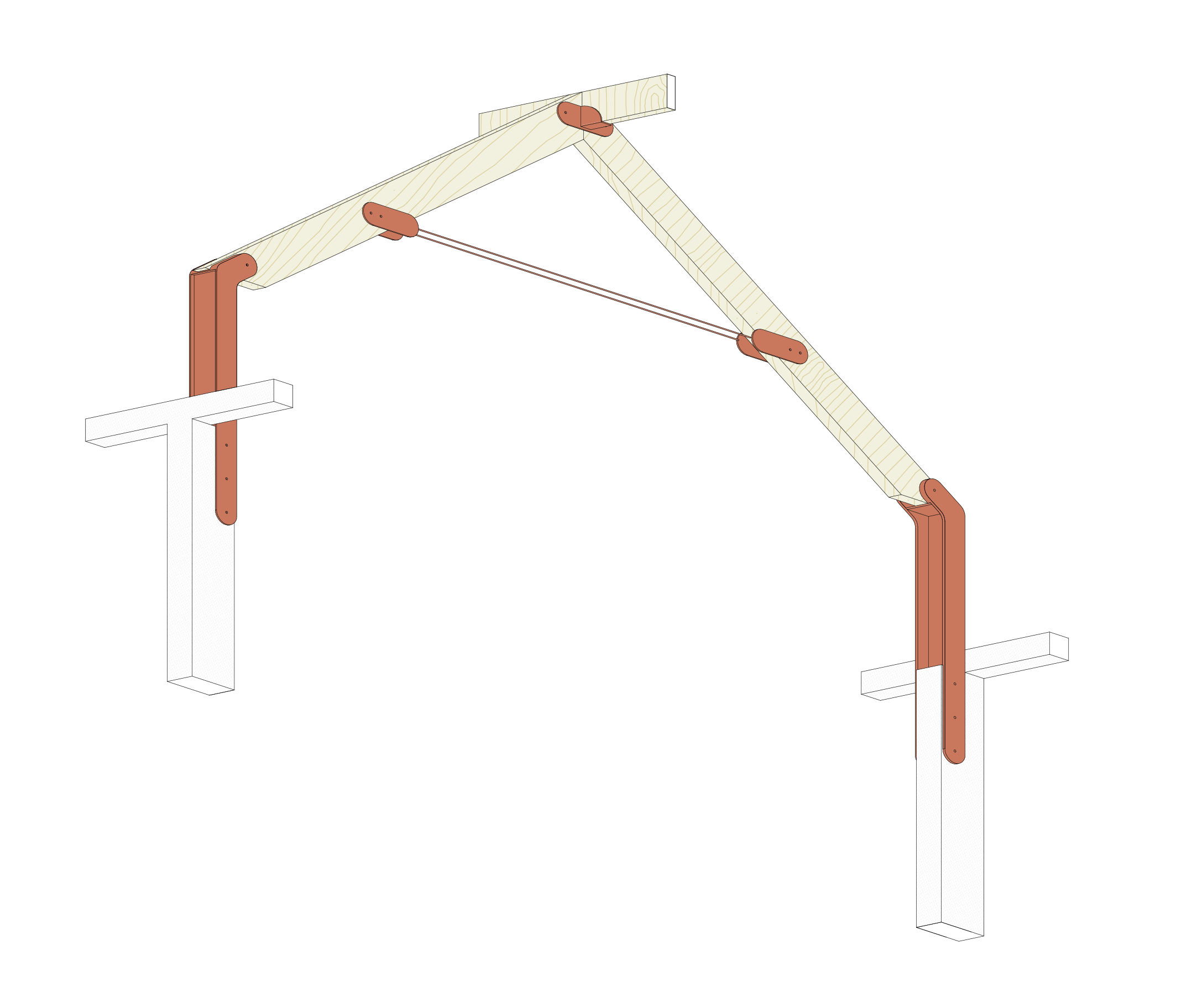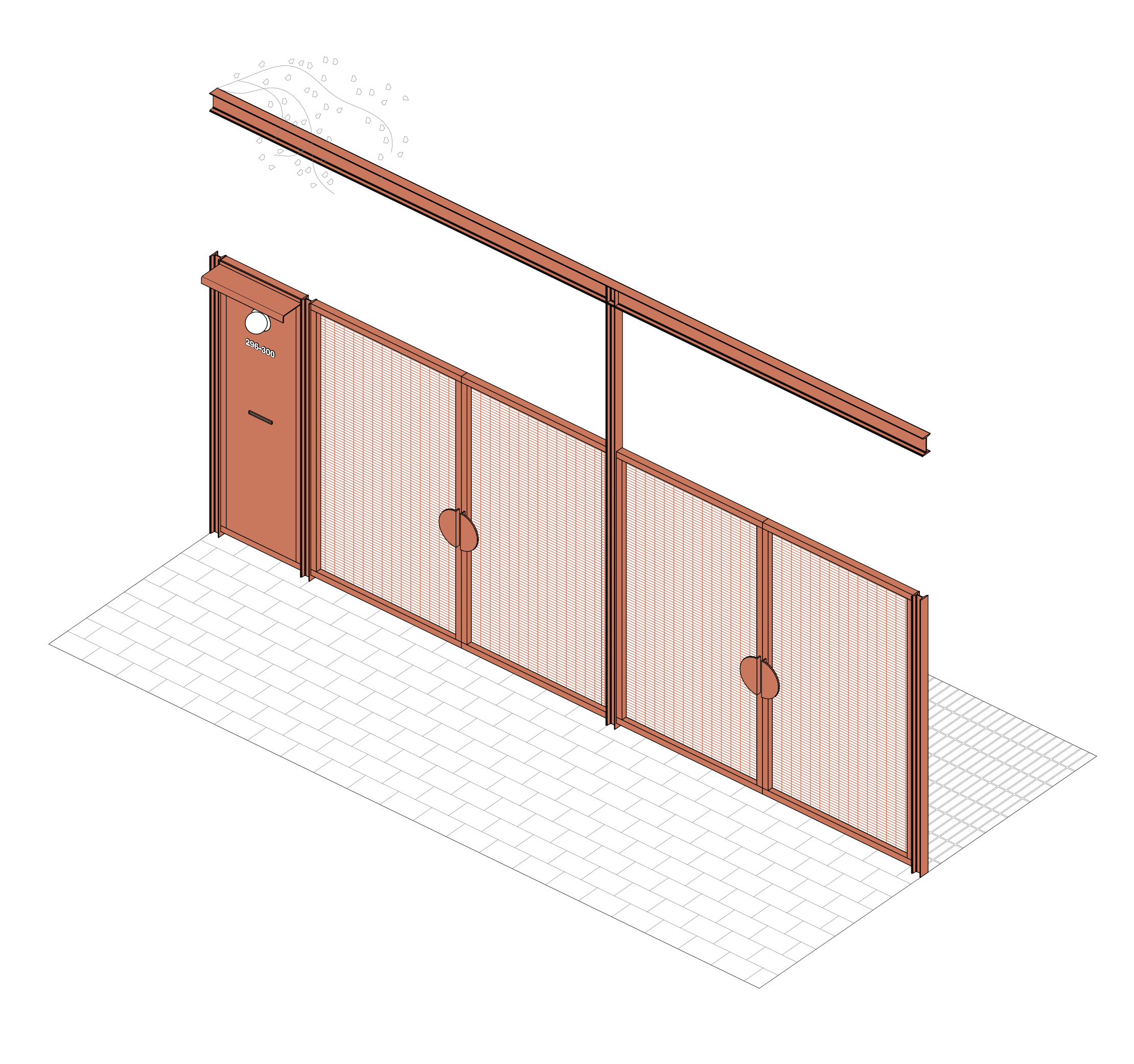337GUE
Program
Urban project, Facility
Location
Woluwe-Saint-Lambert
Date
2019
Themes
Urban, Renovation, Biobased, Inclusive, Public
Phase
Completed
Surfaces
640 m²
Team
Servais, Enesta
Client
Le Gué asbl - Centre thérapeutique et culturel
Budget
€ 2 000 000
A therapeutic and cultural centre
Le Gué is a daycare and employment assistance organisation that has been helping people with mental health problems for over 50 years. Its approach to clinical work is in line with institutional psychotherapy, which considers that it is the institution as a whole that generates therapeutic action. In this sense, the institution ceases to be the place where one is cared for and becomes the place by which one is cared for.
Throughout its history, the Le Gué project has always been concerned with openness and understanding of the world around it. The name of the non-profit organisation, Le Gué Centre thérapeutique et culturel, reflects this original approach through the activities it has set up since its opening: organic market, printing, bicycle repair, film club, debates, concerts and shows. The aim has always been to give the beneficiaries a place in the city and to encourage encounters within the neighbourhood.
Le Gué is now looking to the future, taking into account the evolution of its audience and of society, and the planned deployment of new projects. To meet the institution's new needs, the current premises require substantial renovation work, both in terms of space, upgrading to standards and in terms of energy performance.
To accompany this development, the project rethinks the spaces so that they fully support the approach of Le Gué and re-examines the way in which they can support care, not as a mere setting, but as an actor of hospitality and social ties. Working with the site's unique features, the project weaves new spatial continuities: a courtyard that brings people together, a garden that extends to the street, and clarified circulation routes that facilitate encounters and use. Rather than imposing a new design, the project plays on subtle adjustments – targeted demolitions, measured additions, highlighting thresholds and materials – to enhance the legibility and quality of the premises. Between respect for the existing and flexibility for future spaces, the aim is to provide a setting where people can meet, act and feel at home.
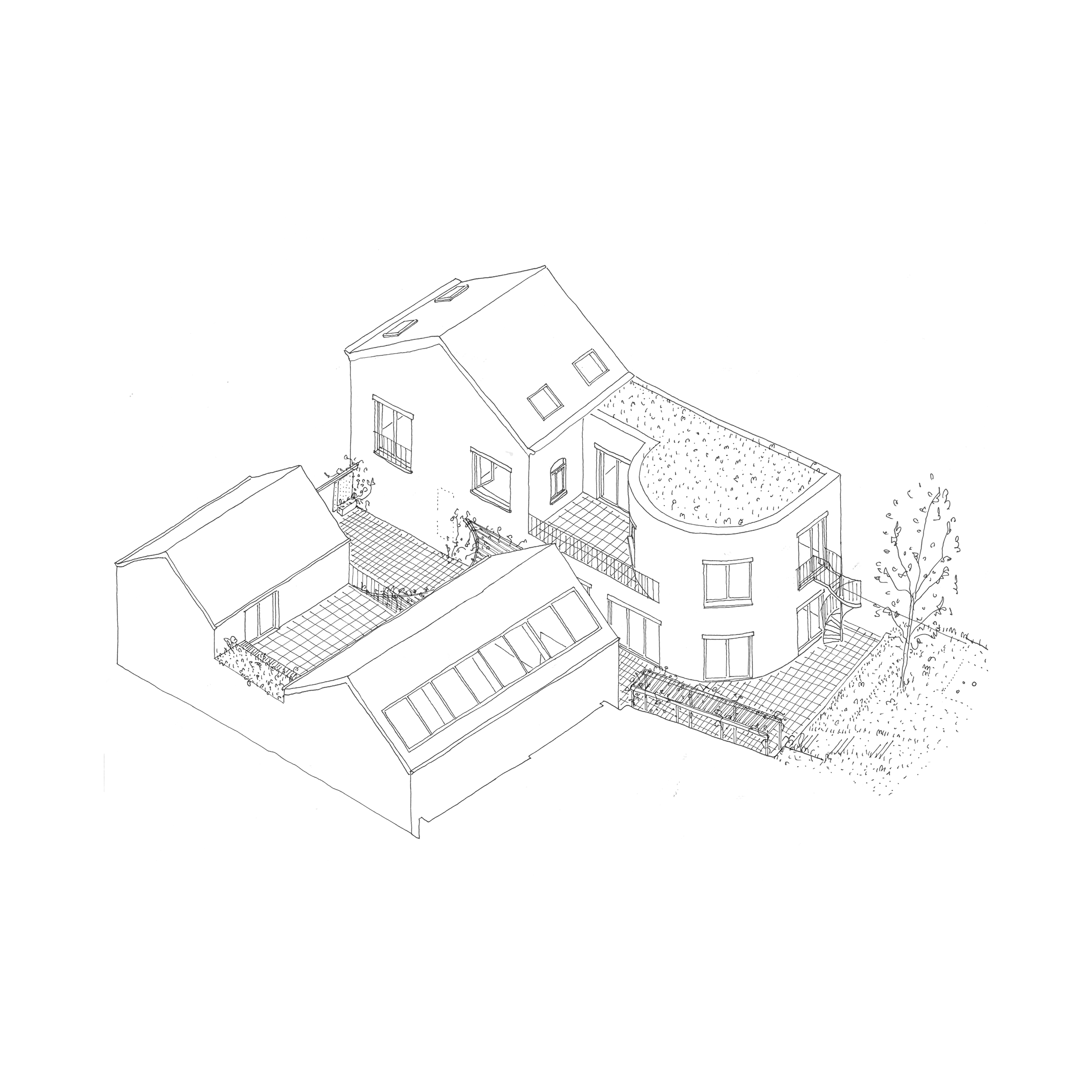
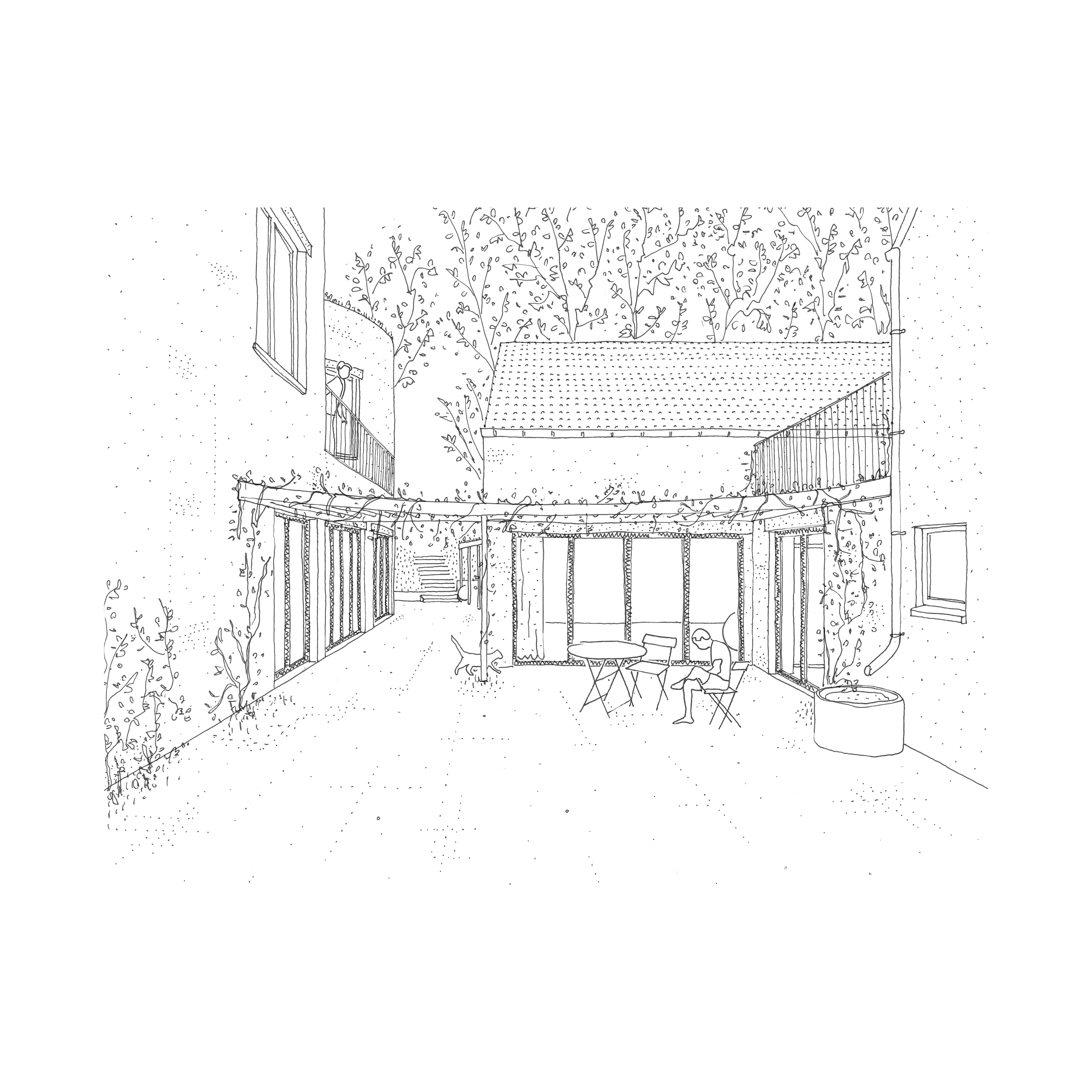
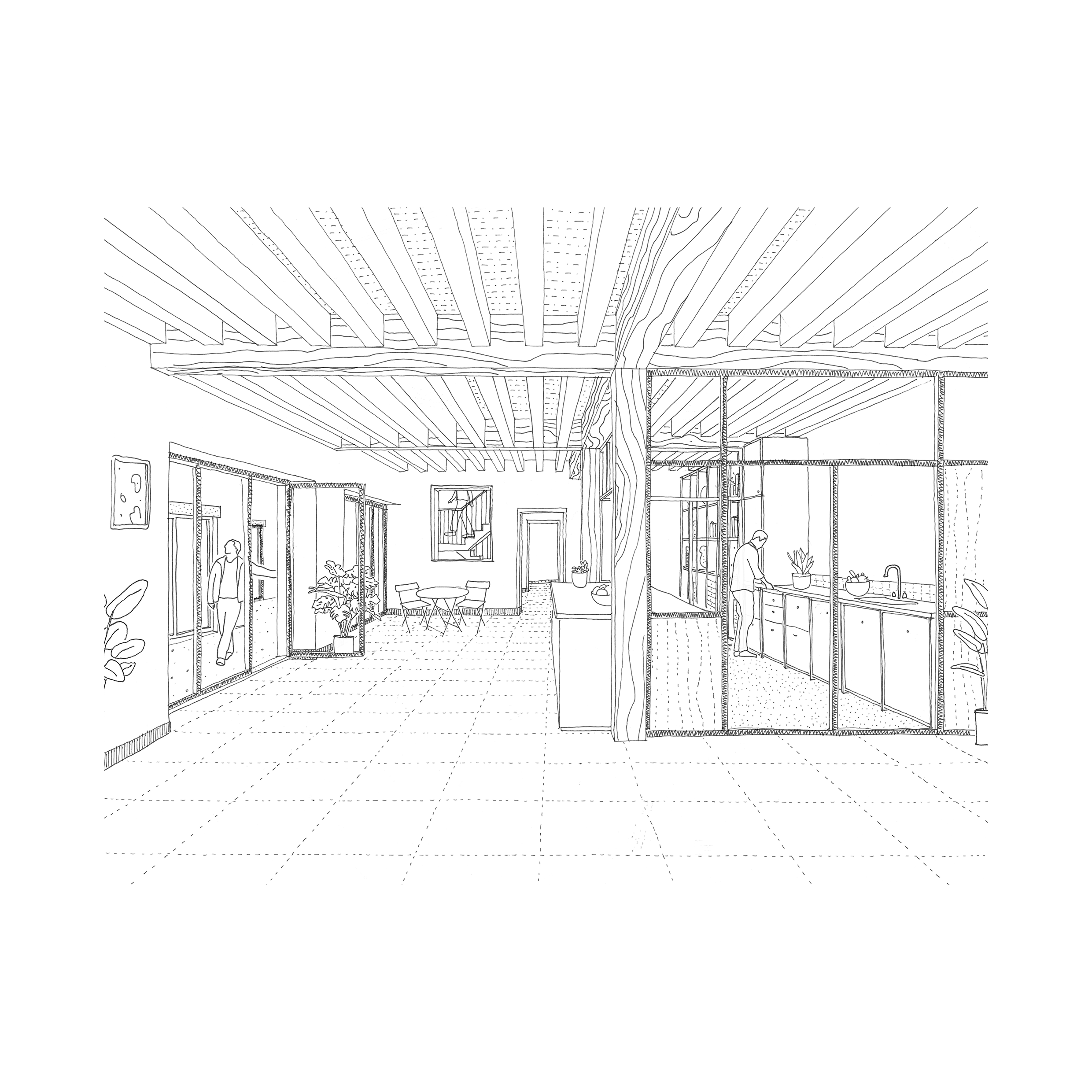
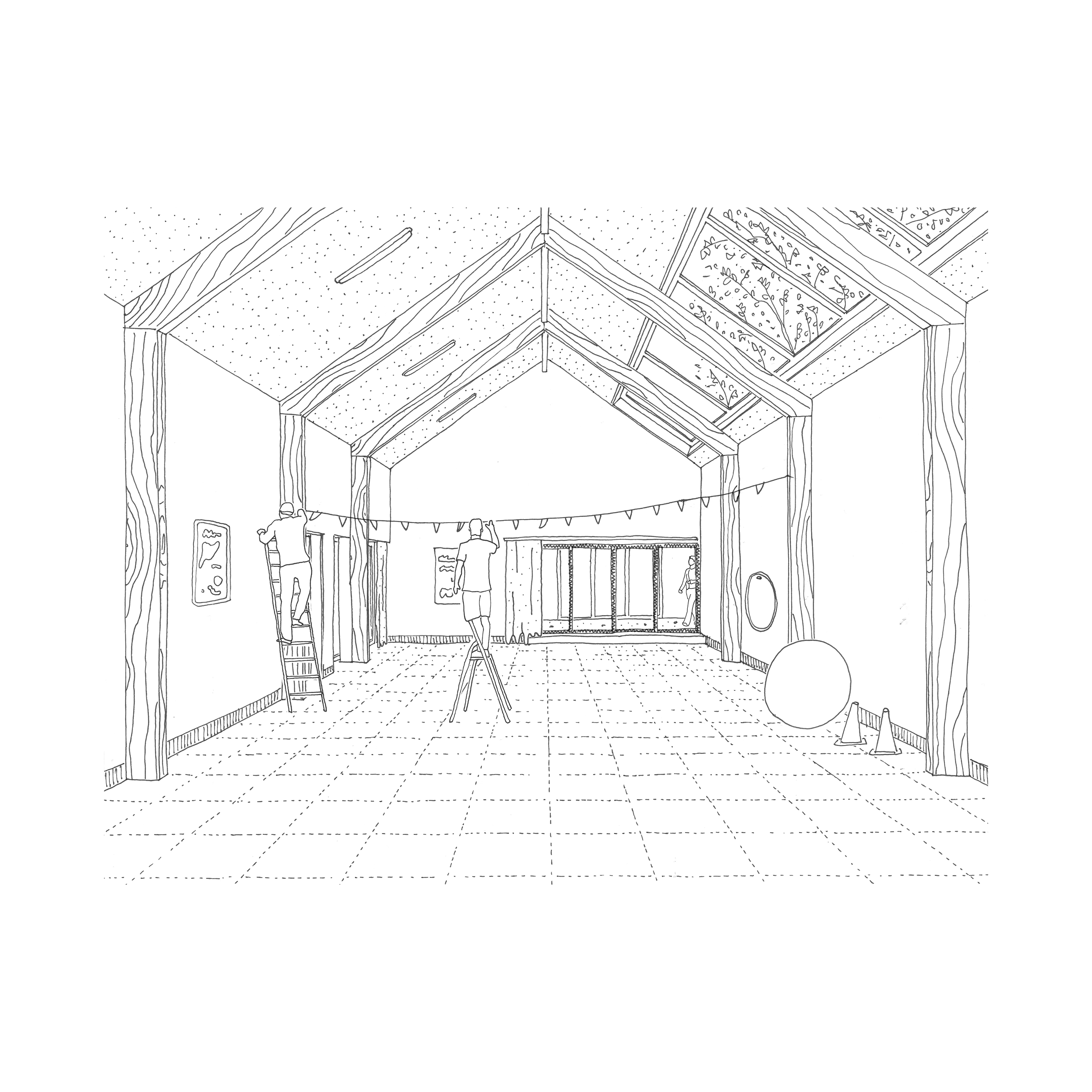
An economical use of resources
The proposed project, with a view to an economical use of resources, takes advantage of the unique features of the site. Thus, the interventions, whether by subtraction or addition of volumes, seek to re-establish the link with the garden at the back of the plot, but also to reinforce the unifying role of the courtyard which the four buildings that make up the centre are built around.
Through pointed interventions, the project manages to recreate continuities and give the centre an overall coherence. This involves a meticulous selection, stemming from a meticulous understanding of the premises, of elements to be demolished and nooks or crevices to be reorganised in order to restore coherence to the site as a whole and make the spaces more appropriable.
The clarification of traffic flows, the new visual connections and the implementation of a rational and evolving structure are part of a reflection on how we work, isolate ourselves, meet up, move around and appropriate a space, in a place which has a therapeutic vocation but is designed like a large house.
The aim is to make the most of the historical environment of these rather low, interlocking buildings, in order to develop this domestic scale and the informal character of these spaces, to alleviate the sometimes stigmatising feeling of medical facilities.
The most significant intervention consists of demolishing the dilapidated building at the end of the courtyard. It is replaced by a new curved volume, in keeping with the neighbouring buildings and the sunlight in the courtyard, better suited to the needs of the institution and better connected to the garden. This intervention allows the new living spaces (kitchen, dining room, relaxation room), the art workshops on the first floor and their users to take full advantage of the green space. This new volumetry offers a ground floor entirely open to the courtyard and the garden, while the upper spaces retain the necessary privacy for patients and carers.
Finally, a series of simple interventions, including the opening up of the existing staircase, the opening of a few windows on the facades overlooking the courtyard and the raising of the roof of the multipurpose hall opposite, maintaining the dimensions of the existing one, in order to create a larger and brighter hall, completes the project.
The domestic nature of the spaces is also reinforced by the materials used for the renovation. These are reused materials from demolitions, where possible, as in the case of the roof tiles and facing bricks. The extensions, meanwhile, are made with warm, high-quality materials, with a wooden structure and insulated with straw, blown cellulose wadding and hemplime blocks.
The project is an opportunity to adapt and design new spaces in line with the ambition that care also depends on the nature of the premises. This work was carried out hand in hand with the team of carers, among others, but also in dialogue with the design offices that guided the process.
